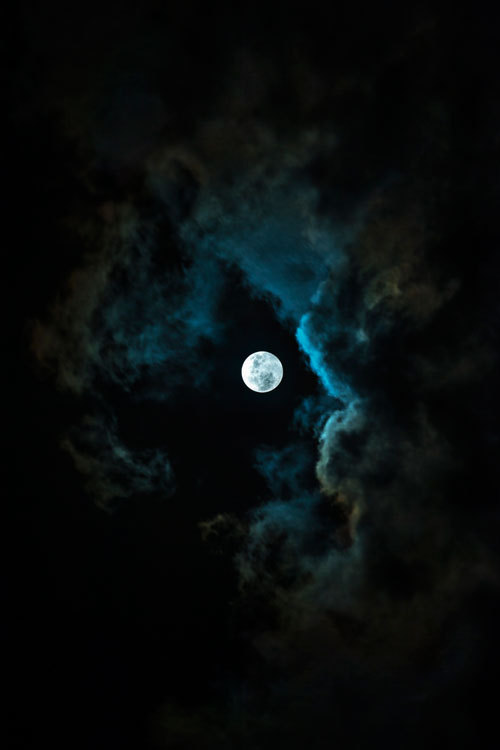The Influence Of Fatherhood On The Science Of Charles Darwin



The influence of fatherhood on the science of Charles Darwin
There are drawings in Charles Darwin’s papers that defy explanation — until we remember that Darwin and his wife Emma had a huge family of ten (rambunctious) children. Scholars believe that a young Francis Darwin —the naturalist’s son— drew this on the back of Darwin’s manuscript for On the Origin of Species.
UC Berkeley psychologist Dacher Keltner has noted that Darwin’s family life may have inspired some of his scientific writing. When his daughter Annie died at age 10, Darwin started to have deep insights about the place of suffering and compassion in human experience.
That led him to argue, in The Descent of Man, that sympathy is our strongest instinct, sometimes stronger than self-interest, and he argued that it would spread through natural selection, for “the most sympathetic members, would flourish best, and rear the greatest number of offspring.”
This point was totally forgotten by evolutionary science for quite some time. Well, given all the awful things humans do to each other, how could you make the case that sympathy is our strongest instinct?
The answer lies in the dependence and vulnerability of our children. Little baby chimpanzees eat by themselves; human babies can’t. Baby chimpanzees sit up on their own; you sit up a human baby, and they go, “Watch out, man, my head’s really big!” Boom!
Their heads are so big because their brains are so big. To fit their big heads through the human birth canal—which narrowed as we started to walk upright on the African savanna—our babies were born profoundly premature and dependent upon people to take care of them.
In fact, our babies are the most vulnerable offspring on the face of the Earth. And that simple fact changed everything. It rearranged our social structures, building cooperative networks of caretaking, and it rearranged our nervous systems. We became the super caregiving species, to the point where acts of care improve our physical health and lengthen our lives. We are born to be good to each other.
The vulnerability of our children transformed human relationships and made compassion essential to our survival →
More Posts from Myletithings and Others


When many individual organisms, like locusts, bacteria, anchovies, or bats, come together and move as one coordinated entity, that’s a swarm. From a handful of birds to billions of insects, swarms can be almost any size. Gigantic swarms can host millions of insects and travel thousands of miles, devastating vegetation and crops. They stay close to each other, but not too close, or they might get eaten by their hungry neighbors.
What all swarms have in common is that there’s no leader. Members of the swarm interact only with their nearest neighbors or through indirect cues. Each individual follows simple rules: Travel in the same direction as those around you, stay close, and avoid collisions. There are many benefits to traveling in a group like this. Small prey may fool predators by assembling into a swarm that looks like a much bigger organism. And congregating in a large group reduces the chance that any single individual will be captured. Moving in the same direction as your neighbors saves energy by sharing the effort of fighting wind or water resistance. It may even be easier to find a mate in a swarm. Swarming can also allow groups of animals to accomplish tasks they couldn’t do individually. When hundreds or millions or organisms follow the same simple rules, sophisticated behavior called swarm intelligence may arise.
From the TED-Ed Lesson Why do animals form swarms? - Maria R. D'Orsogna
Animation by Matt Reynolds










Shengsi, an archipelago of almost 400 islands at the mouth of China’s Yangtze river, holds a secret shrouded in time – an abandoned fishing village being reclaimed by nature. These photos by Tang Yuhong, a creative photographer based in Nanning, take us into this lost village on the beautiful archipelago.


Bee indipendent. 🐝Be Skiantos
Yesterday’s winter temperatures made for some frozen lake skating in the mountains 🙏🏼✨ w/ @jasmine.lorimer Song: whole heart - @gryffinofficial
braedin


Wolf Moon by Miguel Aviles
-
 bradiebug33 liked this · 3 years ago
bradiebug33 liked this · 3 years ago -
 ariadneslament liked this · 8 years ago
ariadneslament liked this · 8 years ago -
 punkgrocerydad reblogged this · 8 years ago
punkgrocerydad reblogged this · 8 years ago -
 ahodgeofpodge reblogged this · 9 years ago
ahodgeofpodge reblogged this · 9 years ago -
 notcharlesdarwin-blog liked this · 9 years ago
notcharlesdarwin-blog liked this · 9 years ago -
 lflxix liked this · 9 years ago
lflxix liked this · 9 years ago -
 tumblush reblogged this · 9 years ago
tumblush reblogged this · 9 years ago -
 tumblush liked this · 9 years ago
tumblush liked this · 9 years ago -
 ok-so-now-i-have-a-egg reblogged this · 9 years ago
ok-so-now-i-have-a-egg reblogged this · 9 years ago -
 colinpurrington liked this · 9 years ago
colinpurrington liked this · 9 years ago -
 aurusallos liked this · 9 years ago
aurusallos liked this · 9 years ago -
 fexxiii reblogged this · 9 years ago
fexxiii reblogged this · 9 years ago -
 certain-obscure-things liked this · 9 years ago
certain-obscure-things liked this · 9 years ago -
 the-victorians liked this · 9 years ago
the-victorians liked this · 9 years ago -
 loves-larry liked this · 9 years ago
loves-larry liked this · 9 years ago -
 stormbear reblogged this · 10 years ago
stormbear reblogged this · 10 years ago -
 elrichuu-blog reblogged this · 10 years ago
elrichuu-blog reblogged this · 10 years ago -
 livingwithendo liked this · 10 years ago
livingwithendo liked this · 10 years ago -
 fictionalfix reblogged this · 10 years ago
fictionalfix reblogged this · 10 years ago -
 grassangel liked this · 10 years ago
grassangel liked this · 10 years ago -
 farragoofwires reblogged this · 10 years ago
farragoofwires reblogged this · 10 years ago -
 mccrackerjack liked this · 10 years ago
mccrackerjack liked this · 10 years ago -
 aliensnipe liked this · 10 years ago
aliensnipe liked this · 10 years ago -
 soysaucevictim reblogged this · 10 years ago
soysaucevictim reblogged this · 10 years ago -
 hagedornjj reblogged this · 10 years ago
hagedornjj reblogged this · 10 years ago -
 majorasnightmare reblogged this · 10 years ago
majorasnightmare reblogged this · 10 years ago -
 majorasnightmare liked this · 10 years ago
majorasnightmare liked this · 10 years ago -
 arnoldshir liked this · 10 years ago
arnoldshir liked this · 10 years ago -
 whyfrolic reblogged this · 10 years ago
whyfrolic reblogged this · 10 years ago -
 elliottt reblogged this · 10 years ago
elliottt reblogged this · 10 years ago -
 enginigger liked this · 10 years ago
enginigger liked this · 10 years ago -
 mypantsaregone reblogged this · 10 years ago
mypantsaregone reblogged this · 10 years ago -
 magyarstew reblogged this · 10 years ago
magyarstew reblogged this · 10 years ago -
 magyarstew liked this · 10 years ago
magyarstew liked this · 10 years ago -
 misnersleuth liked this · 10 years ago
misnersleuth liked this · 10 years ago -
 christawalker liked this · 10 years ago
christawalker liked this · 10 years ago -
 shenannagan liked this · 10 years ago
shenannagan liked this · 10 years ago -
 dancingonasinkingship liked this · 10 years ago
dancingonasinkingship liked this · 10 years ago -
 himiichik liked this · 10 years ago
himiichik liked this · 10 years ago -
 kmmot liked this · 10 years ago
kmmot liked this · 10 years ago


